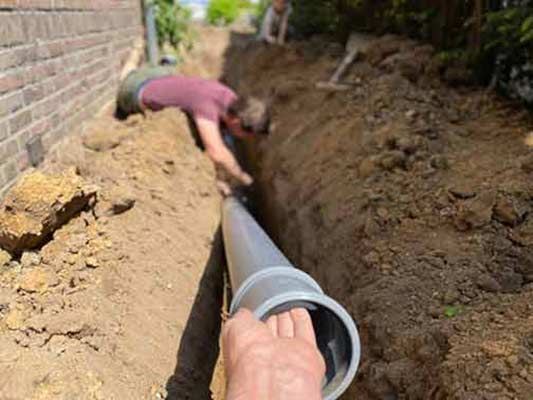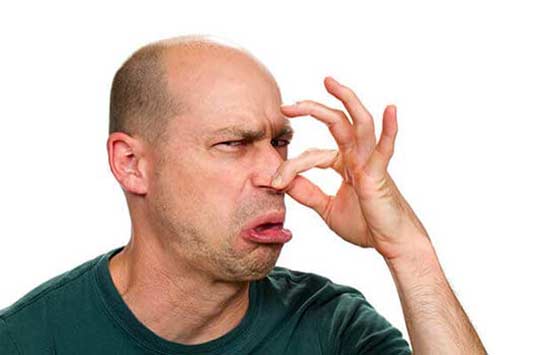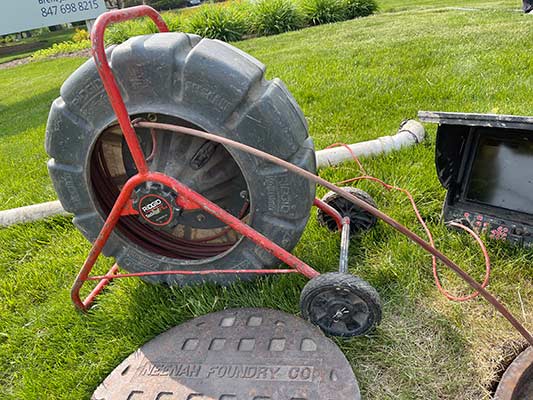
Maintaining a functional sewer line is crucial for the overall health and hygiene of your home. A damaged or malfunctioning sewer line can lead to a host of problems, including unpleasant odors, water damage, and even health hazards. Recognizing the signs that indicate your sewer line needs replacement can save you from costly repairs and extensive plumbing issues in the future.
Frequent Drain Clogs: A Sign of Underlying Sewer Line Problems
One of the most common signs that your sewer line may need to be replaced is frequent drain clogs. If you find yourself constantly dealing with clogged drains, it could be a sign that there is a blockage or damage in your sewer line. While occasional clogs are normal, persistent clogs that affect multiple drains in your home suggest a more serious issue that may require a sewer line replacement. Ignoring frequent clogs can lead to more severe blockages, causing wastewater to back up into your home and creating unsanitary conditions.
Slow Draining Water: An Early Warning of Sewer Line Blockages
Another indication that your sewer line might be in trouble is slow draining water. If you notice that water is taking longer than usual to drain from your sinks, tubs, or toilets, it could be a sign of a blockage or damage in the sewer line. This issue should not be ignored, as it can lead to more significant plumbing problems if left unaddressed. Slow draining water can be caused by a buildup of debris, grease, or even tree roots infiltrating the sewer line, all of which can necessitate a replacement if not resolved promptly.
Unpleasant Odors: Detecting Sewer Line Leaks Through Smell
Unpleasant odors emanating from your drains or yard can be a clear sign of a sewer line problem. Sewer gases should remain confined within the pipes, but if there is a crack or break in the sewer line, these gases can escape and cause foul smells. If you notice persistent sewer odors in your home or yard, it is essential to have your sewer line camera inspected and potentially replaced. Ignoring these odors can lead to a buildup of harmful gases like methane, which can pose serious health risks to your household.
Water Backups: A Serious Indication of Sewer Line Blockages
Water backups in your sinks, tubs, or toilets are a serious indication that there is an issue with your sewer line. Backups occur when there is a blockage or damage in the sewer line that prevents wastewater from flowing properly. This can lead to contaminated water coming back into your home, posing health risks and causing significant damage. If you experience frequent water backups, it is crucial to address the issue promptly and consider sewer line replacement to prevent further complications and potential health hazards.

Water backups in your sinks, tubs, or toilets are a serious indication that there is an issue with your sewer line.
Lush Patches in the Yard: Signs of Sewer Line Leaks
While a lush green yard is often desirable, unusually lush patches of grass can indicate a sewer line problem. If there is a leak or break in your sewer line, the wastewater can act as a fertilizer, causing certain areas of your yard to grow more rapidly and appear greener than the rest. If you notice uneven growth patterns in your yard, it is essential to investigate further and determine if your sewer line needs replacement. Ignoring these signs can lead to more extensive damage to your yard and potentially to your home’s foundation.
Mold and Mildew Growth: Indicators of Moisture from Sewer Line Leaks
Mold and mildew growth in your home can be a sign of a sewer line issue. If there is a crack or break in the sewer line, moisture can seep into your home, creating an environment conducive to mold and mildew growth. This can lead to health problems and structural damage if not addressed promptly. If you notice unexplained mold or mildew growth, it is important to have your sewer line inspected and consider replacement if necessary to prevent further health risks and damage to your property.
Foundation Cracks: The Hidden Danger of Sewer Line Leaks
Foundation cracks can be a serious indication of a sewer line problem. If there is a leak or break in the sewer line, the escaping water can erode the soil around your home’s foundation, leading to cracks and structural damage. If you notice new or expanding cracks in your foundation, it is essential to investigate the cause and consider the possibility of a sewer line replacement. Addressing foundation cracks early can prevent more extensive and costly structural repairs in the future.
Rodent and Insect Infestations: Unwanted Guests from Sewer Line Breaks
Rodent and insect infestations can be a sign of a damaged sewer line. If there is a crack or break in the sewer line, it can provide an entry point for rodents and insects to enter your home. These pests are attracted to the moisture and food sources found in sewer lines. If you experience unexplained infestations, it is important to have your sewer line inspected and potentially replaced. Ignoring these infestations can lead to further damage to your home and pose health risks to your family.
Age of the Sewer Line: Time’s Toll on Plumbing Infrastructure
The age of your sewer line can also be an important factor in determining whether it needs to be replaced. Older sewer lines, especially those made of materials like clay or cast iron, are more prone to damage and deterioration. If your sewer line is several decades old, it may be time to consider a replacement to avoid potential problems in the future. Regular inspections can help you determine the condition of your sewer line and whether it is time for an upgrade to more durable and modern materials.

If you have trees near your sewer line, it is important to monitor for signs of root intrusion, such as slow draining water or frequent clogs.
Tree Root Intrusion: Nature’s Impact on Sewer Lines
Tree root intrusion is a common cause of sewer line damage. As trees grow, their roots can extend into sewer lines, causing blockages and breaks. If you have trees near your sewer line, it is important to monitor for signs of root intrusion, such as slow draining water or frequent clogs. If tree roots are causing damage to your sewer line, a replacement may be necessary. Regular maintenance and inspections can help identify root intrusion early and prevent more extensive damage to your sewer system.
Professional Inspection and Diagnosis: The Importance of Expert Assessment
If you suspect that your sewer line may need to be replaced, it is essential to seek a professional inspection and diagnosis. A licensed plumber can use specialized equipment, such as video cameras, to inspect the sewer line and identify any issues. Based on their findings, they can recommend the best course of action, whether it be a repair or a complete replacement. Professional inspections can provide peace of mind and ensure that any problems are addressed promptly and effectively.
Preventive Measures: Extending the Life of Your Sewer Line
Taking preventive measures can help extend the life of your sewer line and avoid the need for premature replacement. Regular maintenance, having your sewer line cleaned out, can help identify potential issues before they become major problems. Additionally, being mindful of what you flush down your drains and avoiding planting trees near the sewer line can help prevent damage. Implementing these preventive measures can save you time and money in the long run by reducing the likelihood of sewer line issues.
Cost Considerations: Budgeting for Sewer Line Replacement
The cost of replacing a sewer line can vary depending on several factors, including the length of the line, the method of replacement, and the extent of the damage. Traditional trenching methods tend to be more expensive due to the labor and materials involved. Trenchless methods, while generally more cost-effective, may not be suitable for all situations. It is important to obtain multiple quotes and consider the long-term benefits of each method before making a decision. Investing in a high-quality replacement can save you money in the long run by reducing the need for future repairs and maintenance.
Conclusion: Proactive Steps to Ensure a Healthy Sewer System
Recognizing the indications that your sewer line should be replaced sooner rather than later can save you from extensive plumbing problems and costly repairs. By being aware of the signs, such as frequent clogs, slow draining water, unpleasant odors, water backups, and more, you can take proactive steps to address the issue and ensure the health and functionality of your home’s plumbing system. If you suspect a problem with your sewer line, it is essential to seek a professional inspection and consider the most appropriate replacement method for your situation. Taking these steps can help maintain the hygiene and safety of your home for years to come.


